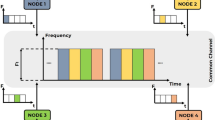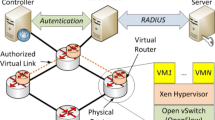Abstract
Mobile telecommunication new services are based on data networks specially Internet. These services include http, telnet, ftp, Simple Mail Transfer Protocol, etc. Besides, we recognize a mobile network as a multiuser network. Transmission Control Protocol (TCP)/Internet Protocol which is sensitive to link congestion in wireline data links is also used in wireless networks. In order to improve the system performance, the TCP layer uses flow control and congestion control. Besides, radio link control (RLC) and medium access control sublayers have been introduced to compensate the deficiency of TCP layer in wireless environment. RLC has an important role in quality of service enhancement of the Universal Mobile Telecommunications System (UMTS). In this paper, we review the protocol stack of UMTS Terrestrial Radio Access Network which is based on Third-Generation Partnership Project. Then, we evaluate its layer 2 error control mechanisms and verify TCP over automatic repeat request error control mechanism and finally quality of service improvement results from it in fading channels.








Similar content being viewed by others
References
Chockalingam A, Zorzi M, Tralli V (1999) Wireless TCP performance with link layer FEC/ARQ. IEEE Int Conf Commun 2:1212–1216
Chockalingam A (2000) Performance of TCP/RLP protocol stack on correlated fading DS-CDMA wireless links. IEEE Trans Veh Technol 49(1):28–33
UMTS (2007) Radio link control (RLC) protocol specification. TS 125 322
Borgonovo F et al (2001) Delay-throughput of packet service in UMTS. IEEE Trans Veh Technol 4:2128–2132
UMTS (2005) Radio interface protocol architecture. R6, TS 125.301
Inamura H, et al. (2003) TCP over second (2.5G) and third (3G) generation wireless networks. RFC 3481, Feb
Stevens W (2001) TCP slow start, congestion. RFC 2001, Jan 1997.
Biglieri E (2005) Coding for wireless channels. Springer, Heidelberg
Cavers JK (2000) Mobile channel characteristics. Kluwer Academic, Dordrecht
Wennstrom A et al (2004) TCP over wireless networks. Karlstad University Press, Karlstad
Gurtov A, Ludwig R (2003) Responding to spurious timeouts in TCP. IEEE INFOCOM 3:2312–2322
Lee Y (2006) Measured TCP performance in CDMA 1x EV-DO network. In: PAM Conference
Canton AF, Chahed T (2001) End-to-end reliability in UMTS: TCP over ARQ. IEEE GLOBECOM 6:3473–3477
Chahad T et al (2003) End-to-end TCP performance in W-CDMA/UMTS. IEEE Int Conf Commun 1:71–75
Padhey J et al (1998) Modeling TCP throughput: a simple model and its empirical validation. In: Proc. ACM SIGCOMM’98, pp 303–314
Jeruchim MC et al (2000) Simulation of communication systems: modeling, methodology and techniques. Kluwer Academic/Plenum, Dordrecht
Author information
Authors and Affiliations
Corresponding author
Rights and permissions
About this article
Cite this article
Dadkhah Chimeh, J., Hakkak, M., Azmi, P. et al. Internet connection with UMTS. Ann. Telecommun. 64, 239–246 (2009). https://doi.org/10.1007/s12243-008-0078-6
Received:
Revised:
Accepted:
Published:
Issue Date:
DOI: https://doi.org/10.1007/s12243-008-0078-6




